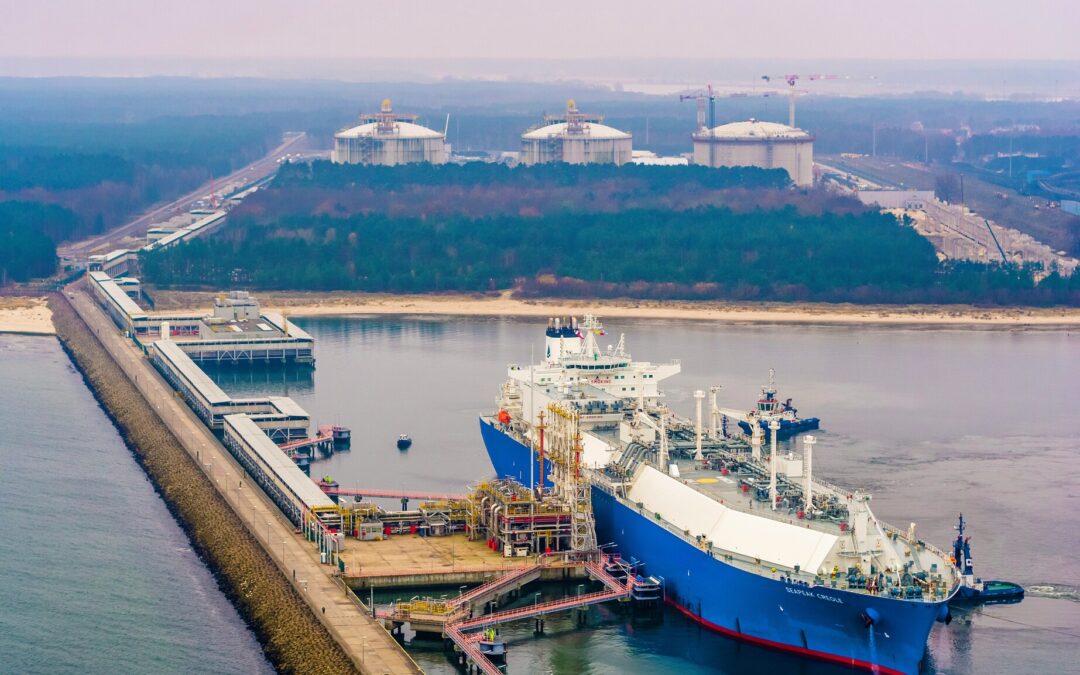Poland received a record number and volume of shipments of liquefied natural gas (LNG) last year, as it diversified away from Russian energy sources. Moscow cut off gas supplies to Poland in April, though Warsaw had in any case been planning to end them by the start of 2023.
In 2022, Poland’s LNG terminal in Świnoujście received 58 shipments carrying 4.4 million tonnes of LNG, reported state gas firm PGNiG today. That was 66% more deliveries and 57% more LNG than the 35 shipments bringing 2.8 million tonnes in 2021.
As a result, LNG has now become Poland’s main source of gas, meeting one third of national demand, notes Daniel Obajtek, CEO of Orlen, another state energy firm that took over PGNiG last year.
Ponad 1/3 zapotrzebowania Polski na #gaz w 2022 roku pokryły dostawy #LNG odebrane przez Grupę ORLEN w @TerminalLNG. Do gazoportu w Świnoujściu dotarło 58 ładunków skroplonego gazu ziemnego, budując nasze bezpieczeństwo energetyczne
📌 https://t.co/05tMhKx0PA pic.twitter.com/cqd9jkSKcg— Biuro Prasowe PGNiG (@PrasowePGNiG) January 4, 2023
The largest number of LNG deliveries last year, 36, came from the United States, followed by 18 from Qatar, reports PGNiG. Poland also received two shipments from Nigeria, one from Trinidad and Tobago and, for the first time, one from Egypt.
PGNiG notes that the rise in imports was possible thanks to an expansion last year of the regasification capacity of the Świnoujście terminal from 5 billion cubic meters (bcm) annually to 6.2 billion bcm. In 2022, around 94% of that capacity was used.
Meanwhile, last year also saw Orlen start to receive LNG deliveries at Lithuania’s terminal in Klaipeda. Eight such shipments arrived, carrying half a million tonnes of LNG, most of which was then sent on to Poland via a recently opened pipeline. The remainder supplied markets in the Baltic states.
In 2023, the US will remain Poland’s primary supplier of LNG, due to two long-term contracts with Chenier and Venture Global, which will together bring in almost 3 million tonnes of supplies next year. Poland’s first LNG tankers will also go into service this year.
Poland is aiming to have a new floating LNG terminal in Gdańsk up and running by 2026. Last year, climate minister Anna Moskwa announced that, due to interest from Ukraine, Slovakia and the Czech Republic, its planned annual regasification capacity would be doubled to at least 12 bcm.
In October, a new pipeline bringing natural gas from Norway to Poland via Denmark through the Baltic Sea began operation. It will have an annual capacity of 10 bcm.
Main image credit: PGNiG press materials

Daniel Tilles is editor-in-chief of Notes from Poland. He has written on Polish affairs for a wide range of publications, including Foreign Policy, POLITICO Europe, EUobserver and Dziennik Gazeta Prawna.




















